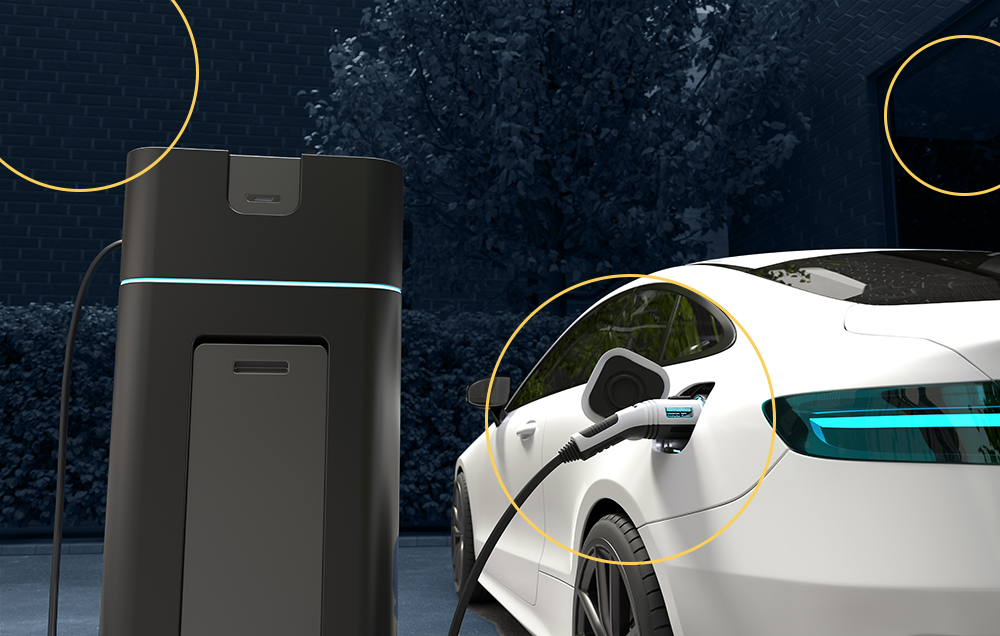
The adoption of Electric cars in the Philippines has been gaining popularity ever since its first hit on the automotive market, and it’s not hard to see why. With the Philippine government supporting electric cars as a combat to the ever-increasing fuel prices electric cars are an economically and environmentally friendly alternative compared to petrol engine cars. But if you want to strike a balance between petrol and electric usage, hybrid cars are also available for car enthusiasts who love cruising around the cities of the Metro.
In this article, we’ll rev up the conversation about electric cars in the Philippines. We’ll break down the pros and cons, giving you the lowdown on whether switching to an electric ride is the right move for cruising around the Metro. From the eco-warrior appeal of fully electric models to the hybrid options that let you dance between electric and petrol, we’re about to dissect it all. So, fasten your seatbelt as we hit the road, guiding you through the twists and turns of electric cars in the Philippines.
What are Electric Cars?
Electric cars, also known as electric vehicles (EVs), are automobiles powered by one or more electric motors, using electrical energy stored in rechargeable batteries. Unlike traditional internal combustion engine vehicles that rely on gasoline or diesel, electric cars are propelled by the energy stored in their batteries, which is converted into power to drive the electric motor.
Electric Motor – The electric motor is the heart of an electric vehicle. It converts electrical energy from the battery into mechanical energy to drive the wheels.
Battery Pack – This is a set of rechargeable batteries that stores and supplies electrical energy to power the electric motor. The capacity and technology of the battery greatly influence the range and performance of the electric car.
Charging System – Electric cars are recharged by connecting them to an external power source. Charging can be done at home using a standard electrical outlet or at public charging stations. The charging infrastructure is a critical aspect of electric vehicle adoption.
Power Electronics – These components control the flow of electrical energy between the battery and the electric motor, ensuring efficient power delivery.
Regenerative Braking System – Electric cars often feature regenerative braking, a technology that converts kinetic energy during braking into electrical energy, which is then fed back into the battery for storage.
What are Hybrid Cars?
Hybrid cars are vehicles that combine an internal combustion engine (usually fueled by gasoline or diesel) with an electric propulsion system. This combination allows hybrid cars to benefit from the advantages of both conventional engines and electric power. There are two main types of hybrid cars: parallel hybrids and series hybrids.
Parallel Hybrids
- In parallel hybrid systems, both the internal combustion engine and the electric motor are mechanically connected to the transmission and can directly drive the vehicle.
- The electric motor assists the engine during acceleration, reducing fuel consumption and emissions.
- During deceleration or braking, the electric motor acts as a generator, converting kinetic energy into electrical energy, which is then stored in the battery for later use.
Series Hybrids
- In series hybrid systems, the internal combustion engine is not directly connected to the wheels. Instead, it operates as a generator to produce electricity.
- The electric motor is the primary source of propulsion, using the electricity generated by the engine or drawn from the battery.
- Series hybrids can operate in an electric-only mode for short distances, relying entirely on the electric motor.
How are Hybrid Cars Fueled?
While every hybrid car is designed differently and it can vary in ways of fueling, hybrid cars do not need to be plugged into an external power source to charge the battery, as is the case with plug-in hybrid electric vehicles (PHEVs) or fully electric vehicles (EVs). The electric power generated through regenerative braking and engine-driven charging is typically sufficient to support the hybrid system’s operation.
According to Statista, in 2022, there were 1.27 million registered private vehicles in the Philippines in 2022, with 0.76% or 9,666 EV registered according to the Department of Energy. But the good news is that it is projected that EVs registration could rise to 30% annually, according to Patrick T. Aquino, director of the DoE’s Energy Utilization Management Bureau.
Should You Drive an Electric Car in the Philippines?
Driving an electric car in the Philippines has its pros and cons such as environmental, economical, road infrastructure, and more.
Advantages of Driving an Electric Car in the Philippines
- No Coding for Hybrid and Electric Cars
Yes, you heard that right! No coding for electric and hybrid cars! According to the EVIDA law, fully electric cars and hybrid cars are fully exempted from the number coding scheme for regular vehicles in the country. Also, under the Electric Vehicle Development Act Law, All Electric and Hybrid Vehicles will be issued a specialized EV license plate and will be entitled to tax exemptions.
- Budget Savings from Fuel
For fully electric vehicles, you won’t need to worry about the increasing fuel prices as electric vehicles are chargeable like our mobile phones, laptops, and electronic devices. This advantage allows you to save more money in the long run, rather than going over multiple stops at gas stations. On another note, Full battery operated vehicles will be exempted from 100 percent excise tax while hybrid vehicles that operate both by fuel and battery will be given 50 percent of excise tax exemption under the TRAIN Law.
- Government Incentives
The Philippine government supports the adoption of electric vehicles, offering incentives such as tax breaks and reduced registration fees. Stay in the know about these incentives to maximize your savings and contribute to the growing electric car community.
- Growing Charging Infrastructure
The charging infrastructure for electric vehicles is expanding across the Philippines. These charging stations are starting to become accessible across malls and parking spots across Metro Manilla. With more charging stations becoming available, your electric car journey becomes more convenient, allowing you to explore the archipelago with ease.
- Reduces Noise Pollution
Reducing noise pollution is a standout feature of electric cars. Their purposeful design ensures a serene driving experience, making each journey a peaceful retreat from the hustle and bustle of traditional car noise. Whether you’re navigating city streets or cruising along highways, the quiet hum of your electric car transforms the daily commute into an enjoyable ride.
Disadvantages of Driving an Electric Car in the Philippines
- Deep-flood prone areas
Navigating through deep flood-prone areas can pose a challenge for electric car drivers in the Philippines. The susceptibility of electric vehicles to water exposure may lead to potential damage to sensitive electronic components, impacting the vehicle’s performance. While conventional cars may handle such conditions more robustly, electric cars require extra caution and may not be the optimal choice for regions prone to frequent and deep flooding. Consider the local weather conditions and terrain before opting for an electric vehicle in flood-prone areas.
- Inaccessible Car Parts
Finding replacement parts for electric cars can be a potential drawback in the Philippines. Unlike traditional vehicles with widely available components, electric cars may have specialized parts that are not readily accessible at local mechanics. This scarcity can lead to longer waiting times for repairs and increased costs associated with importing or sourcing specific electric vehicle components.
Before opting for an electric car, it’s essential to consider the availability of maintenance and repair services in your area to ensure a smoother ownership experience.
- No more loud revving
Remember above that having a quiet car is an advantage? Don’t get me wrong, but if you’re a car enthusiast or a “car guy”, this can be a huge deal-breaker. Having an electric car means saying goodbye to that sweet hum of a roaring engine when you’re revving or cruising at high speeds.
- Limited Charging Areas
As mentioned above, the electric car charging infrastructure is slowly growing, but in the present time, there is still limited accessibility to charging stations in the Philippines. In Metro Manila, there are 7 charging stations, so it can be challenging to cruise around the Metro with only your home as a reliable charging station.
Read: Top 5 Electric Cars in the Philippines
Conclusion
Driving an electric car in the Philippines introduces an innovative approach to mobility that intertwines economic and environmental benefits with unique challenges. On the positive side, these electric marvels promise a greener future, reducing both fuel expenses and environmental impact. With government incentives paving the way and a surge in global technological trends, the prospect of owning an electric car is undoubtedly enticing.
However, it’s not without its share of hurdles. Navigating flood-prone areas demands extra caution, and the absence of the traditional engine roar may leave some driving enthusiasts yearning for a bygone auditory experience. Moreover, the limited availability of specialized parts and the evolving charging infrastructure underscore the stage of electric vehicle adoption in the country.
While these pros and cons of whether you should drive an electric car in the Philippines are no matter to you, and want to change the paradigm towards mobility, then driving an electric car can be a way to go for you.









